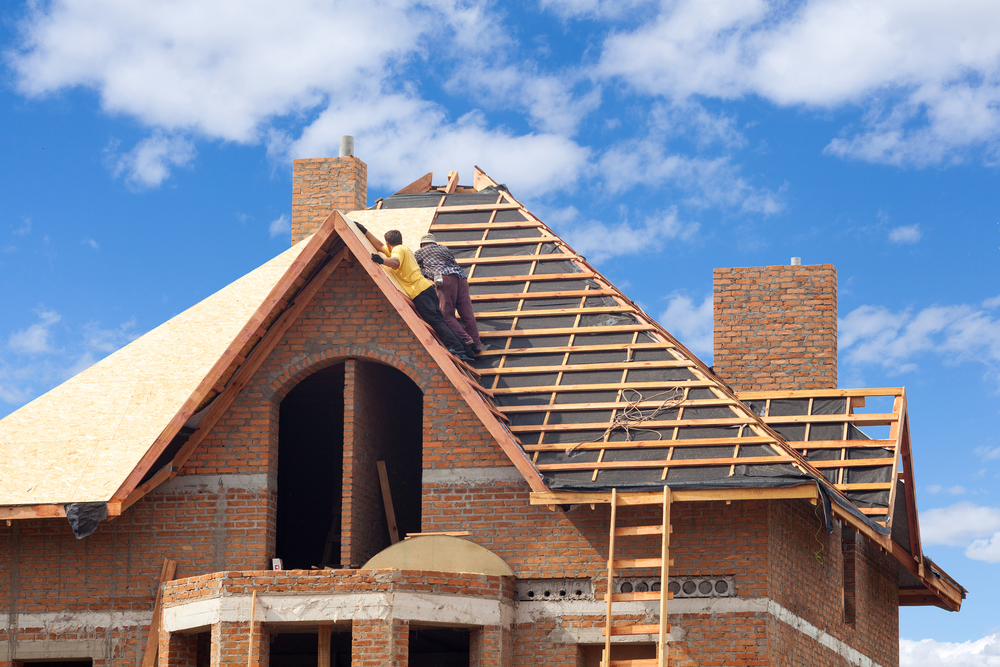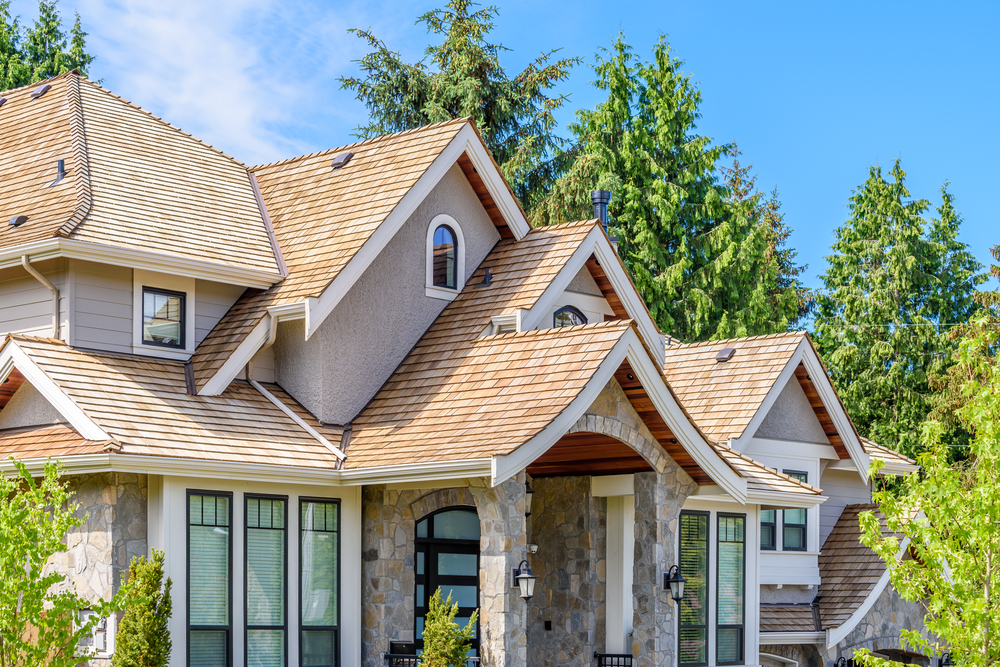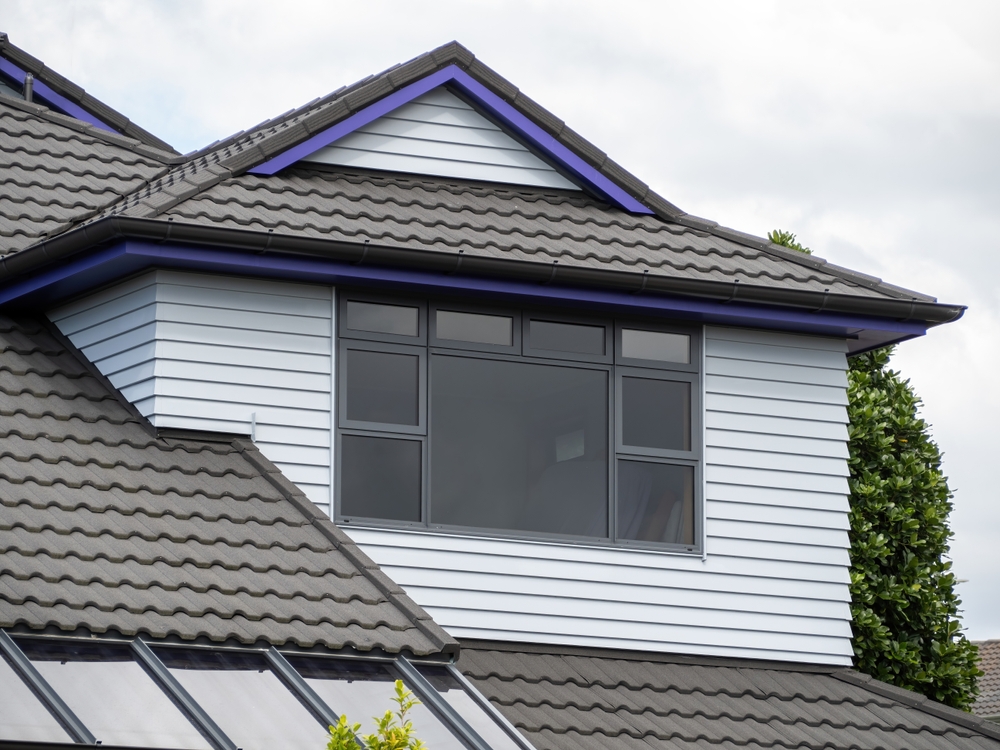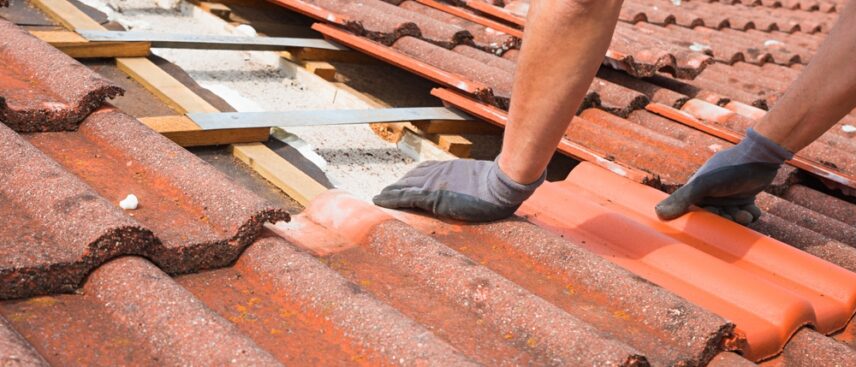Residential Roofing Services

Do you need roof repairs? Installation? An inspection? Proper roof maintenance involves multiple projects over the lifespan of a roof. Professional roofing contractors provide the following roofing services to enhance the safety, aesthetics, and performance of your roof.
New Roof Installation
Roof installation is necessary for new construction and major renovation projects, such as an addition on your home. Using precise planning, roofers install the appropriate materials, ensuring the project is properly permitted and adheres to industry codes.
Learn more about new roof installations.
Roof Replacement
Roof replacement is required when a roof has reached the end of its lifespan due to wear and tear over time or because of severe damage from a catastrophic event. The typical lifespan for a roof is 25-50 years. If it is time for a total or partial roof replacement, roofing contractors remove the old roof and install all new materials.
Learn more about roof replacement.
Roof Repair
Often, a full roof replacement is not necessary. Instead, professional roof repair can restore a roof’s integrity if damage or leaks are present. The roofing contractor identifies and repairs problem areas, such as replacing missing shingles, repairing cracked tiles, applying sealant, or repairing ventilation structures.
Learn more about roof repairs.
Roof Inspections
Roof inspections are a critical part of roof maintenance and should be scheduled annually. A professional contractor examines the roof, gutters, and ventilation, checking for missing or damaged shingles, proper ventilation and drainage, and other potential issues. This proactive inspection can detect minor issues before they become major problems, which can help extend the life of your roof.
Learn more about roof inspections.
Gutters
Gutter cleaning and repair go hand in hand with roof maintenance. Keeping gutters clear of debris and draining properly are key to roof health. Roofing contractors have the tools and training to perform annual gutter cleaning and repairs safely and efficiently.
Insulation
Proper insulation enhances the functionality of a roof by slowing heat transfer. This reduces your energy costs while increasing the comfort and livability of your home. It can also help seal cracks and deter pests. Roofing professionals can recommend the best insulation solutions based on property style and age and the homeowner’s goals and budget.
Learn more about roof and attic insulation.
Solar Panels
Solar panel projects include the installation of new panels, replacement of existing panels, and replacement of a roof that features solar panels. These panels allow homeowners to harness solar rays and convert sunlight into electricity. The average solar panel system has a lifespan of 25 to 30 years and requires regular roof maintenance for optimal results.
Roofing Materials

Roofing materials come in an array of styles for today’s homeowners. The choice depends on factors such as longevity, appearance, weight, cost, ease of installation, and maintenance. A roofing contractor can provide insight into which materials are best for your home.
Asphalt Shingles
Asphalt shingles are one of the most common roofing materials. Several varieties are available, allowing homeowners to choose various aesthetics and performance enhancements. Styles include architectural, 3-tap, and premium asphalt shingles. Roofing contractors can recommend the best type based on climate, roof style, and homeowner needs.
Learn more about asphalt shingles.
Wood Shingles & Shakes
Wood roofing typically consists of redwood or cedar materials. Roofers can install this type of roof to achieve a distinctive look. Wood shingles deliver a smooth, uniform finish, while wood shakes, which are hand-split and non-uniform in hue and texture, provide a rougher, rustic look.
Learn more about wood shingles.
Metal Panels & Tiles
Typically made from steel, aluminum, or copper, metal roofing panels are available in multiple styles. These sheets of metal are often chosen for their durability and low maintenance. Roofers can also tailor their color, shape, and texture to fit most architectural designs.
Learn more about metal roofing.
Clay & Slate Tiles
Clay roof tiles are manufactured from clay that is fired in a kiln. This process creates a durable product that does not peel or fade. Clay tiles are available in colors such as orange, white, and brown, but are most often terracotta. Designers often choose clay tiles to create a long-lasting, colorfast roof or to achieve a Spanish or Mediterranean style.
Learn more about tile roofing.
Membrane Roofing
Membrane roofing is used for flat or low-slope roofs. This roofing system provides a waterproof covering to prevent leaks. Made of a thin layer of various materials, such as synthetic rubber, modified bitumen, or polyvinyl chloride (PVC), roof membranes are ideal for roofs with a slope factor of 3/12 or less.
Rolled Roofing
Also referred to as MSR (mineral surface roll), rolled roofing is an oil-based asphalt product. It is economical and easy to install, but it offers a short lifespan and can only be installed on low-pitch roofs. These qualities make rolled roofing a popular choice for small outbuildings such as sheds, shops, barns, garages, or treehouses.
Popular Roofing Styles

Each roofing style offers unique advantages related to performance and architectural appeal. Some are best suited for certain climates, while others are best suited for certain budgets. Experienced roofing contractors can help homeowners determine the best roof style for their residence and recommend the proper maintenance for each type of roof.
Gable Roof
A gable roof is one of the most popular and recognizable architectural styles. Also known as a pitched or peaked roof, it features two sloping sides that meet to form a triangular peak. This slope offers attractive symmetry, efficient watershed, and extra attic space, making it a top choice for functionality and ease of maintenance.
Hip Roof
The hip roof design features four sloped sides that meet at one common peak. This architectural style is self-bracing and durable, making it resistant to wind damage. This simple roof style creates structural walls that are uniform in height and can complement many residential aesthetics.
Flat Roof
Any roof with a slope of less than 10 degrees is considered a flat roof. This style can be constructed from many materials and works best in warm, dry climates. Flat roofs are typically used for commercial or industrial buildings, but they can be installed on residences.
Shed Roof
Also called a skillion roof, a shed roof features a straightforward design with one sloping side. This single slope maximizes the building’s height and facilitates drainage. Simple and economical to build, shed roofs can be used on any type of structure, including homes.
Dormers
Dormers are small structures with a window that are set vertically within a sloping roof. These little rooms project out from the structure, adding space, ventilation, and light to an attic or top floor. This architectural feature can also add style and curb appeal to a home’s exterior.
Mansard Roof
This double-sloped, four-sided roof style is also called a French roof. It has two slopes on each side, with a steep pitch on the lower slopes and low-slope sections on top. This is one of the most unique roof styles available, and it often features the steepest pitch that roofs can have.
Gambrel Roof
Also known as a barn roof or a Dutch roof, a gambrel roof is two-sided, with two slopes on each side. The lower slopes are steeper than the upper slopes. This symmetrical design maximizes space to create larger attics and requires fewer support structures, which can reduce installation costs.
